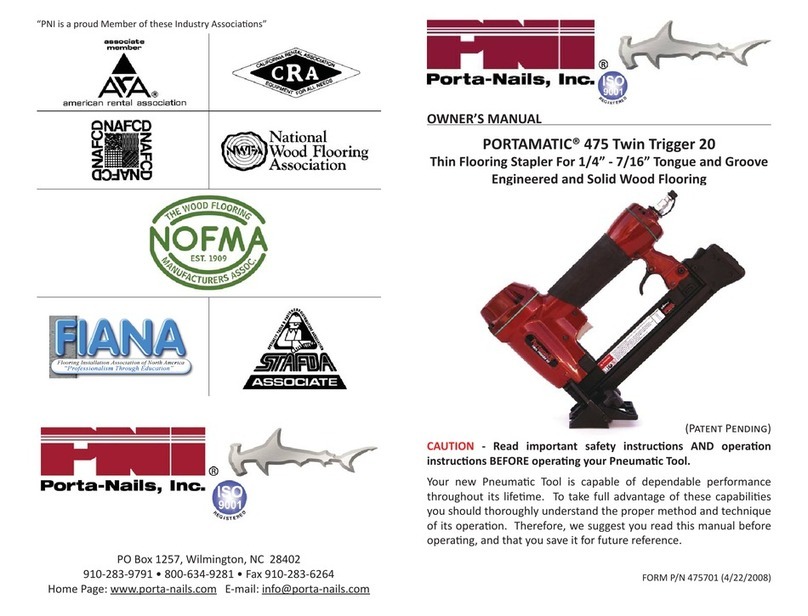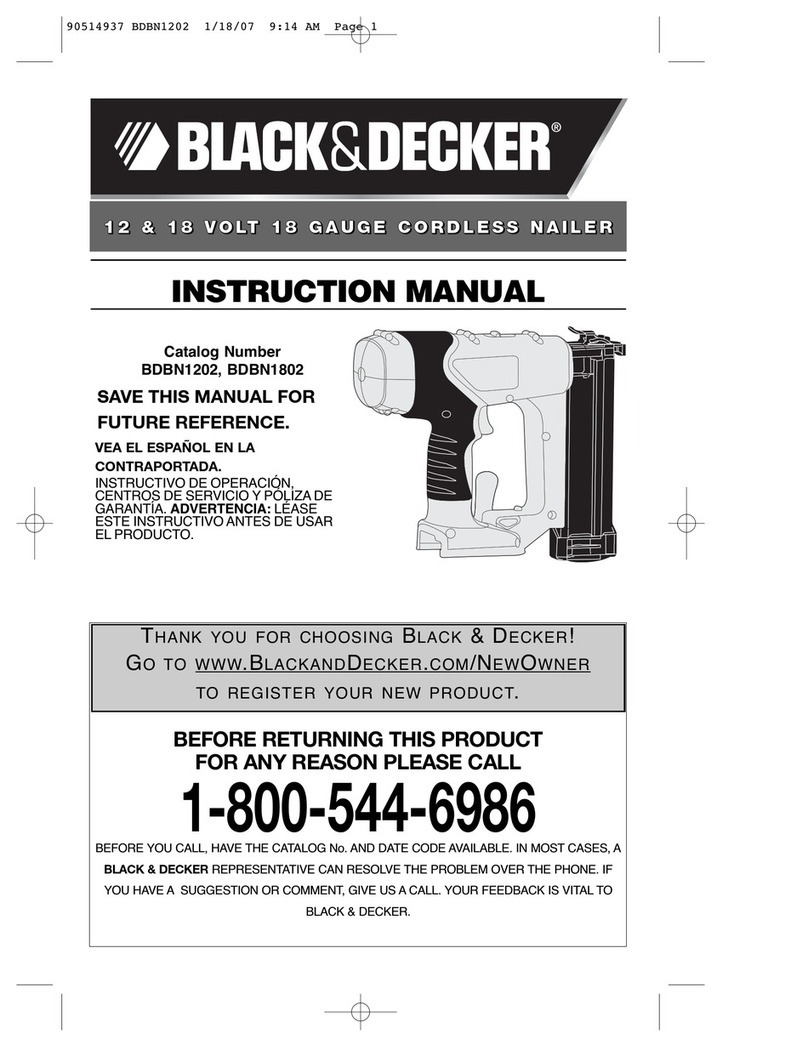
3
Safety Instructions
1. KNOW YOUR POWER TOOL
Read the owner's manual carefully. Learn its
applications and limitations as well as the potential
hazards specific to this tool.
2. THE OPERATOR AND ALL OTHER
PERSONNEL MUST WEAR PROPER EYE AND
EAR PROTECTION IN THE WORKAREA.
Wear safety goggles at all times. (Must comply with
ANSI Z87.1). Everyday eyeglasses have impact
resistant lenses only. They are NOT safety glasses.
Also, wear ear protectors (plugs or muffs) during
extended periods of operation
3. KEEP WORKAREA CLEAN
Cluttered areas and benches invite accidents. Floor
must not be slippery due to sawdust.
4. KEEP CHILDREN AWAY
All visitors should be kept a safe distance fromwork
area.
5. WEAR PROPER APPAREL
Do not wear loose clothing, gloves, neckties or
jewelry (rings, wristwatches) that could get caught in
moving parts. Wear non-slip footwear. Wear
protective hair covering to contain long hair. Roll
long sleeves above the elbow.
6. SECURE WORK
Be sure the tongue and groove of the flooring strips
are properly interlocked and secured in place before
nailing.
7. STAY ALERT
Watch what you are doing. Use common sense. Do
not operate tool when you are tired or while under the
influence of medication, alcohol or drugs.
8. ALWAYS INSPECT TOOL BEFORE
OPERATING.
Tool must be inspected prior to use to insure proper
use of power supply. Tool must be inspected to insure
proper working order. An improperly functioning tool
must not be used
9. KEEP HANDS, FEET AND OTHER BODY
PARTS AWAY FROM NAIL EJECTION AREA.
Serious injury could occur if body parts are not kept
away fromnail ejection area.
10. ALWAYS ASSUME THE TOOL CONTAINS
FASTENERS.
Do not activate the tool unless the tool is placed firmly
against the work piece.
11. NO HORSEPLAY.
Do not point the tool toward yourself or anyone
whether it contains fasteners or not.
12. NEVER TRANSPORT TOOL WHILE
DEPRESSING THE TRIGGER.
13. DISCONNECT TOOL FROM AIR SUPPLY
WHEN:
Moving the tool to a new location, performing any
maintenance or repair, clearing a jamor tool is
unattended.
14. NEVER SERVICE WHILE ATTACHED TO AIR
SUPPLY.
Always disconnect the tool fromthe power source
when servicing, or replacing parts.
15. DO NOT USE TOOL IF OPERATING
CONTROLS ARE INOPERABLE.
Do not remove, tamper with, or otherwise cause the
tool operating controls or safety controls to become
inoperable.
16. DO NOT OPERATE TOOL IFSAFETY
FEATURES NOT WORKING PROPERLY.
Disconnect tool frompower source if safety trigger or
operating controls are not working properly.
17. USE ONLYPORTA-NAIL FASTENERS.
Only use fasteners recommended by the manufacturer.
Use of other fasteners may cause serious injury,
jamming of tool or improper operation.
18. USE ONLYPRESSURE-REGULATED POWER
SOURCE.
Use only a pressure regulated power source set
at 125 psi maximum. The power source must have a
safety relief valve set at 135 psi maximum.
19. THE TOOL SHOULD NOT BE OPERATED AT
THE MAXIMUM AIR PRESSURE.
The tool air-line should be connected to the power
source through an airline pressure Regulator and an
airline Filter. The air line Regulator should never be
set higher than 110 psi as marked on the tool. Lower
pressures may be used as recommended by the
manufacturer.
20. HAZARDOUS POWER SOURCES SHALL NOT
BE USED.
Hazardous power sources including, but not limited
to, Oxygen, Combustible gases, sources whose
pressure can exceed 200 psi if the pressure Regulator
fails, bottled gases, including air should never be used.



























